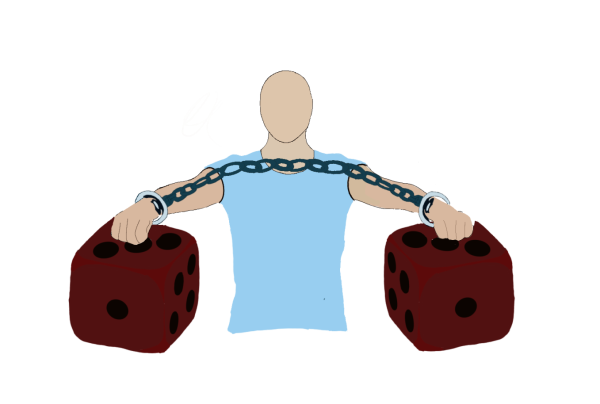The Impatient Patient: Video game addiction more than a virtual reality
Part 1 of this series can be found here https://hhsepitaph.com/6416/opinion/the-impatient-patient-video-game-addiction-more-than-a-virtual-reality/
Gaming addiction now has a place into the World Health Organization (WHO) International Classification of Diseases. However, there has been debate over whether or not the decision to brand it as an actual disorder is a premature choice. The gaming world is already very stigmatized, and there are concerns that with its induction as a disorder, more stigma is added.
Are cases in which people have died due to overexposure from video games simply an anomaly? Perhaps — the American Journal of Psychiatry published a study that seems to refute the validity of a gaming disorder, in that only a small part of the population may qualify for a diagnosis of it.
In addition, according to Professor Mark Griffith of Nottingham Trent University, an author on the study, to diagnose gaming without looking at other factors is harmful, as there is the possibility of a pre-existing mental disorder present, and that it is not just video games themselves that incite such destructive behavior.

However, in Asia, where video game addiction is surging and has taken form in its own culture, larger cases of those affected by gaming addiction have been cited. According to the U.S. Library of Medicine, in a study done, figures of 10 to 15 percent gamers addicted have been recorded in the East, compared to 1 to 10 percent of western gamers.
According to Nigel Henderson, president of Mental Health Europe, a lack of social connections or a supportive network of family and friends may spur an individual to turn toward video games.
The need for human interaction is inescapable — in fact, friendship and intimacy have their own tier on Maslow’s Hierarchy of Needs — and for obvious reasons. The advancement of human civilization was not borne out of a single individual making great leaps, but out of groups of individuals.
English poet John Donne once wrote no man is an island, and this makes for more than an impactful peace of poetry. According to psychologist Julianne Holt-Lunstad, a lack of social connections with peers increases chances of early death by 50 percent.
Does the culture in Asia mirror feelings of isolation, where social connectivity is perhaps not such an inherent part of the culture? It is possible, seeing as the Korean Institute for Health and Social revealed 90 percent of Korean adults were under some form of stress daily, while Newzoo, a market intelligence provider, reported that 49 percent of gamers in Korea are adults between 21 and 35.
As a matter of fact, WHO’s prospective induction of gaming addiction stemmed from pressure from Asian countries, according to WHO officials. In particular, the South Korean government has funded campaigns and treatment centers all centered around the problem of gaming addiction.
South Korea has even set laws in place to limit screen time within younger children. Noted in the Shutdown Law passed in 2011, in which children younger than 16 were disallowed from video games between 10 p.m. to 6 a.m. Though this law has since been dissolved following backlash, the addition of it highlights the South Korean government’s battle against video games.
While gamers in Korea do not fall into the age range of that of teenagers, the precedence of the Shutdown Law marks that methods of prevention are being implemented to rid of the use of gaming and the possible dangers it might incite among youth.
If stress and lack of connectivity are concurrent factors that might result in a video game addictions, Korean students may just be at risk. According to the New York Times, 53 percent of Korean students with thoughts of suicide attributed academic inadequacy as main contributor to such thoughts. Among teens in the rigorous Korean school system with little free time, the refuge of video games is an outlet for coping with stress from school, according to Engadget.
In the end, it is undeniable that video games and their culture induced from stress pressure, whether in the East or West, has been elevated to a point where it causes seriously destructive incidents for those affected. An individual dying from playing too much video games is rare, but the fact that there are such individuals should be a cause of concern.
While a small group of individuals may not reflect an overall population, who is to say that similar incidents may not follow? It may be better to not propose a war on video games just yet, but making available treatment options for those in danger of spiraling can only do more good than harm.







